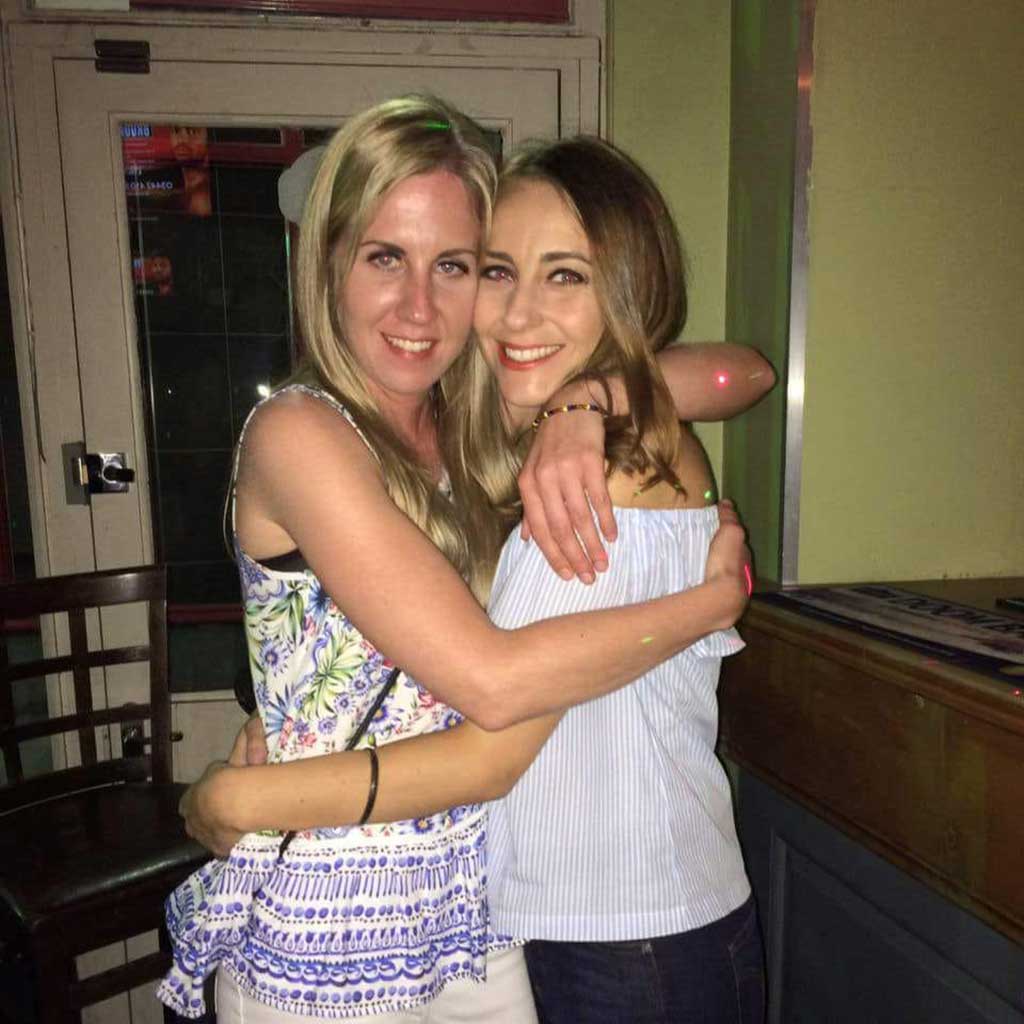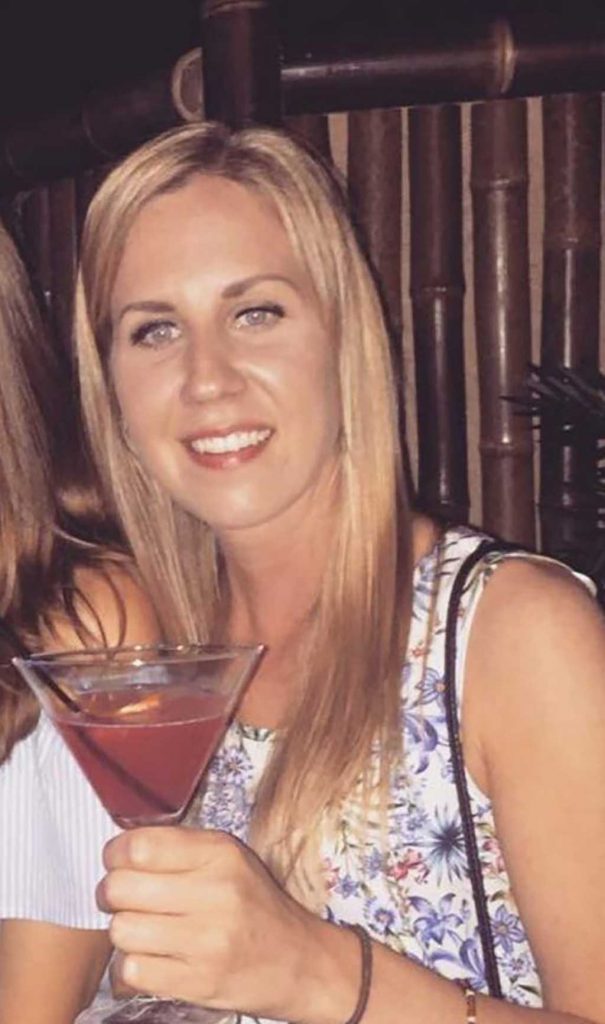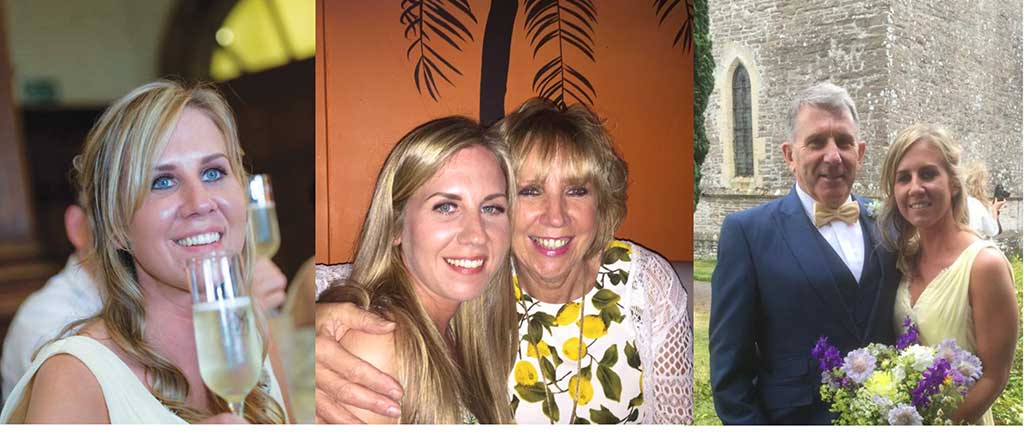Rachel
Rachel Day died of a condition that has been called ‘the deadliest killer you’ve never heard of’. Since then, her close-knit family have been on a mission to raise awareness in her memory
Rachel Day was just 29 when she died.
“We were totally blessed to have Rachel for those 29 years,” says Bernie, Rachel’s mum. It was Bernie who first found Rachel gravely ill at her flat in Whitchurch.
The family are reflecting on Rachel’s life, and as it’s a Friday night, her best friend Louise has joined Rachel’s parents Bernie and Steve at their home in Lisvane – which they moved to from Rhiwbina when Rachel was 12. Louise and Rachel always popped in on a Friday and so Louise has continued this tradition.
“It all happened so quickly,” Bernie says. “Rachel had recently gone through a bad patch in her life, having split up from her boyfriend of 7 years. She’d had her heart broken but had picked herself up. She moved in with her flatmate and had blossomed into a real woman.”
Having worked as a lifeguard and swimming instructor at Llanishen Leisure Centre for 11 years, Rachel was looking for new ways to develop professionally.
“Rachel had created a business plan because she wanted to set up a dog crèche. They’d reduced her hours at the Leisure Centre and she had started working for Catherine of Friends For Pets Cardiff as a dog walker. People loved her and she had more work than she could manage. She really was on a new career path.”
But Rachel would never see her dreams come true. On a late May Bank Holiday weekend in 2017, the family’s world was turned upside down.
“The last week of her life was incredible,” says Louise. “It was almost as if she knew something was going to happen. She wanted to spend as much time as possible with her family and friends.”
“This particular week,” says Bernie, “there was something about her that we all noticed. She was positively glowing and beautiful. Towards the end of the week, she took me out on a boat ride and we had an ice cream together. She then went to Ogmore and watched the sunset. We all went out on the Saturday night and we had such a great night.”

Yet within 24 hours, Rachel would be in Accident and Emergency and telling the triage nurse that she felt like she was dying.
“She had spent the Sunday relaxing on her balcony in the sun with Louise. Her flatmate Sohaila came home from work around tea time. Rachel eventually went to bed about 10pm, starting to feel unwell.
“The following day, the weather was awful and I texted her to see if she wanted some lunch but she never responded. I texted again and still didn’t get a reply. Steve and I went for a coffee in Whitchurch and I was feeling uneasy so I thought that I’d ring her. That’s the bit that I’ll never forget.”
Nothing could have prepared Bernie for the response she got when Rachel did finally pick up the telephone.
“She was screaming down the phone ‘Mum! Mum! I’m in dreadful pain!'” Steve and I left the coffee shop straight away and I kept Rachel on speaker phone. Her flat wasn’t too far away and the door was open so we went upstairs. She was in such pain and her legs had started to swell and were mottled. Her face was all blue and she could hardly breathe. It was the screams I’ll never forget.”
What Bernie didn’t know was that Rachel had been to A&E overnight after urging Sohalia to take her and had been told that there was a five and a half hour wait. Eventually, she’d been advised by triage to go home, get some rest and take some paracetamol – which is what she did.
“I called for an ambulance, something Rachel couldn’t do because of her condition. The only reason she could answer her phone when I rang was because she didn’t have a touch screen phone and was able to click the answer button instead of swiping. She couldn’t move because of the septic shock. The lactic acid level in her body was eight times as much as it should have been.”
Rachel finally arrived back at the hospital where staff quickly realised that it was sepsis. She was in so much pain and suffering that she was told that she’d have to be put into a coma.
While staff set up the equipment needed, Rachel spoke to her family for the last time. She asked her Mum if she was going to die.
“None of us knew what was going to happen but now that we finally had a diagnosis, we thought that the staff would be able to treat it. We reassured Rachel. We told her how much we loved her and that we’d be there for her when she woke up. Those were the last words we shared.
“Rachel was put straight into a coma but a consultant came along and she was crying. She told us that Rachel had sepsis and that it was attacking her vital organs. She told us that the next 24 hours would be critical but to call the family to the hospital in case she didn’t last the night.”
None of the family had heard of sepsis before.
“Her face was going blue and you could see the sepsis ravaging her body, even at that point. Her nose was going black, her body was becoming hard and mottled. Her arms and legs were freezing cold.”
Rachel survived the first night but doctors warned that it didn’t mean she’d pull through.
“We had ups and downs for six days. Rachel had to have brain scans as blood was building up on her brain and they weren’t sure whether it had been damaged. We were told that she could lose her personality. After those six days, they wanted to bring her slightly out of sedation to see where they were at. We were told she could hear us and were able to spend some precious time with her that I’ll never forget.”
Doctors told Rachel to communicate through blinking – one for yes, two for no.
“I asked her if she wanted me to sing to her,” says Bernie, “but Rachel blinked twice. We were thrilled because it showed that she still had her sense of humour.
“Steve went into the ward and the nurse said ‘Your Dad is here. Can you open your eyes?’ She managed to just about part her eyelids but you could see how hard it was for her to do it.”

Within an hour or so, she was placed back into a coma, and that was the last interaction the family had with Rachel.
“On the 8th day, we were down in the canteen and we had a phone call saying that they wanted to speak to us urgently. The vascular surgeon said that he wanted to make a couple of incisions to release some pressure. Blood clots had formed and needed to be released,” continues Steve.
“They did that and found that the tissue in her legs and right arm was dead and would have to be amputated to save her life. We felt like we’d been asked to make a decision and decided to give her a chance. She’d still have a left arm to operate a wheelchair and feed herself, brush her hair, we thought.”
Rachel was taken down to surgery the next day.
“The surgeon came out and wanted to speak with us again,” says Bernie. “He came in, matter of fact, and said that he’d taken one leg above the knee, another below the knee and both arms. We were in complete shock. We were also told that due to the nature of the surgery, they’d have to do skin grafts which would take years to complete. They also said that they would have to remove her nose.”
Bernie felt like the family were being asked to decide if Rachel would live. It was too much.
“I went into the chapel and there was an open window. I was shaking violently and walked right up to the window and thought about jumping. But then I felt someone put a blanket around me and hold me as I was gently moved away from the window. It was the hospital chaplain.”
The family were then told that there was nothing more that they could do for Rachel.
“They put her in a special room. We had music and candles. When they finally turned the machine off, it was just a matter of minutes before she passed away, which showed how bad she really was.
“We realised then what sepsis was. We’d never heard of it before and when we looked at the stats, we could see that it was a bigger killer than bowel, prostate and breast cancer combined. For the sake of a simple screening or blood test, Rachel could still be here today. You lose 7-8% chance of having your life saved every hour.”
Raising awareness of the condition has been an overriding priority for the family since Rachel’s passing in June 2017. In order to raise money to increase awareness, the family has staged two dog walks and family fun days, Christmas and Summer Balls, a football tournament and have also entered the last two 10k Invncbls and Cardiff Half Marathons.
They have also been instrumental in funding and implementing a Sepsis Pathway for anyone arriving at Accident and Emergency in UHW showing signs of infection.
“If anyone is showing any of the red flag symptoms, it triggers the Sepsis Six Care Bundle. We want awareness posters displayed as Lift Wraps in UHW and we are looking to increase awareness nationally via the Welsh Government.
“She’d be so proud and in awe of the strength to be able to achieve so much in so little time. Some mornings, it is just so hard to even get out of bed, but Rachel’s legacy of love has given us a purpose. It’s our mission now to raise awareness so that other people don’t need to go through what we’ve been through. I know she is guiding us and directing what we need to do,” says Bernie proudly.
Rachel’s Day takes place on Saturday 18th May 2019. Find out more here
What is sepsis?
Sepsis is triggered by infections, but is a problem with the immune system going into overdrive.
It starts with an infection that can come from anywhere – even a contaminated cut or insect bite.
Normally, the immune system kicks in to fight the infection and stop it spreading.
If the infection spreads quickly around the body, the immune system launches a massive immune response to fight it.
Symptoms include:
• Slurred speech
• Extreme shivering or muscle
pain
• Passing no urine in a day
• Severe breathlessness
• I feel like I might die
• Skin mottled or discoloured
Symptoms in young children include:
• looking mottled, bluish or pale
• very lethargic or difficult to wake
• abnormally cold to the touch
• breathing very fast
• a rash that does not fade when
pressed
• a seizure or convulsion
You can find more information at the Sepsis Trust

